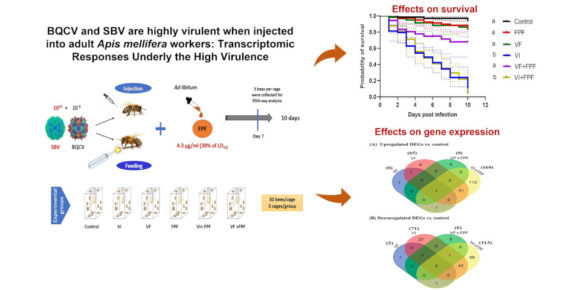Transcriptomic Responses Underlying the High Virulence of Black Queen Cell Virus and Sacbrood Virus following a Change in Their Mode of Transmission in Honey Bees (Apis mellifera)
Background: Over the last two decades, honey bees (Apis mellifera) have suffered high rates of colony losses that have been attributed to a variety of factors, chief among which are viral pathogens, such as deformed wing virus (DWV), whose virulence has increased because of vector-based transmission by the invasive, ectoparasitic varroa mite (Varroa destructor). A…







